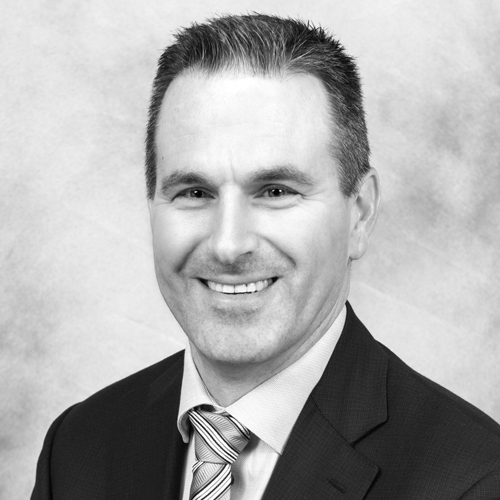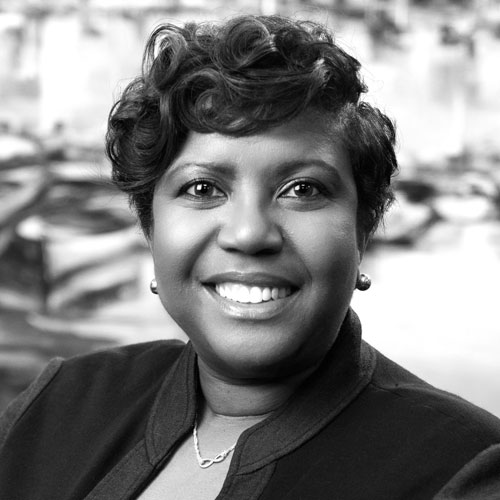April Andrews-Singh discovered her mission on the surgical floor during her fourth year in nursing school.
That’s where she met a young father with a glioblastoma tumor, which spreads its tentacles through the brain like an octopus. She watched the family grieve with his terminal diagnosis. The man, who was in his early thirties, had developed symptomology earlier in the year, but his insurance company denied the claim because the tumor was a pre-existing condition.
“I kept thinking, ‘This is unbelievable,’” says Andrews-Singh, general counsel at Nicklaus Children’s Health System. “I remember having to maintain a professional decorum, but knowing someday I would find out how the game was played and that I would change it.”
For Andrews-Singh, the road to change was paved with professional twists and turns. In 2001, after graduating law school, she started in a midsize private practice. During that time she became a lobbyist.
Two years later, Andrews-Singh began feeling the need to get closer to healthcare and became the associate general counsel and chief compliance officer at Cleveland Clinic Hospital, a joint venture at the time with Tenet Healthcare, with Tenet’s operations based in Weston, Florida. Then, she joined Pediatrix Medical Group (now MEDNAX) as its eastern regional director of compliance, which exposed her to children’s healthcare. “The patient is the entire family, not just the patients themselves,” she says. “The passion people have to take care of pediatric patients is second to none.”
Andrews-Singh followed that passion to Miami Children’s Hospital, now called Nicklaus Children’s Health System, in 2012 as its senior vice president of compliance. Three years later, she stepped into the role of general counsel, where she’s amplifying the role of advocacy in healthcare. The organization houses a fundraising arm, Nicklaus Children’s Health Foundation, and a nonprofit physician practice subsidiary, in addition to the hospital and fifteen outpatient centers in South Florida that house a medical staff of more than seven hundred physicians and 4,200 employees.
The legal leader brought her advocate mind-set with her, and her efforts have revolutionized the organization. Until 2017, Nicklaus was the only children’s hospital in the United States that had the highest volume of pediatric cardiovascular surgery and intervention but did not have a corresponding heart transplant program. After long negotiations with the state and competitors, Nicklaus intends to start pediatric heart transplants this year.
Andrews-Singh also considers the opening of a ten-bed maternal fetal unit for high-risk babies with low-risk mothers an impactful personal victory. Previously, a baby with a pre-existing condition that needed imminent lifesaving surgery upon birth would immediately need to be taken via Life Flight to Nicklaus while mom waited in the birth hospital. However, due to restrictions of the state pediatric specialty license held by Nicklaus, an obstetrics program was not feasible. But Nicklaus was able to persuade the state that in these circumstances, the baby should be born there. “It was one of those moments where you realize that you changed a law that’s actually going to be saving people’s lives,” she says.
There is a whole spectrum of communication and a psycho-social dynamic to pediatric medicine that doesn’t exist in adult care, according to Andrews-Singh. If a child is sick with appendicitis and the family comes out of surgery, staff must help the parents understand the process and must ensure the child understands it in a way that is age appropriate, whether that child is three years old or seventeen years old. The Child Life department creates tools in order to help to decrease anxiety, communicate information, and minimize pain in an appropriate manner.
“We won’t do certain things at the child’s bedside because that’s their safe environment, and we want them to know they’re not going to have painful things like needles,” she says. “Although they might get scared, they’re much quicker to bounce back and not let it bring them down. Children, even in the middle of chemotherapy, have this resilience and zest for life that you would never see in an adult oncology patient with the same diagnosis.”
Andrews-Singh has also restructured her teams to reflect that versatile approach. She brought in an administrative director as a liaison across legal, risk management, infection control, and quality departments. They meet weekly to debrief and identify trends and preventively mitigate potential issues. Better interdepartmental communication pinpoints outstanding issues and enables her team to provide tools for clinicians, such as a sepsis protocol.
Nicklaus differentiates itself through the best innovation technology resources available for patients and their families. “We’ve taken it to a whole new level here,” Andrews-Singh says. “We have technology that allows a doctor here to use an otoscope or a stethoscope on a patient sitting in Ukraine, and the practitioner in real time can see into their ear or hear their heartbeat as clearly as if they were in the same room.”
The hospital also utilizes technology to improve sanitation throughout the facility. Historically, staff would conduct rounds to monitor hand washing: the number one way to stop infection. Now, technology is utilized to tell if a person has passed through to the patient without stopping at the sink. Her team is also developing a safety alert system set to be in the testing phase by the end of the year. The mobile platform provides the ability to report a safety concern and then dispatch someone to fix the problem on the spot. Everybody in the institution—employees, patients, family members, visitors, and volunteers—become the eyes and ears of safety.
Data from the safety alert system and EMRs will direct risk mitigation systems, and clinicians may use data points to know when to watch a patient more closely. Andrews-Singh references the example set by the airline industry. Pilots are allowed to fly or not based on previous flight hours because they get tired. She is measuring how, for example, a team of nurses with varying levels of experience—say two years and fifteen years—versus a team of nurses all with twenty years of experience can impact risk.
Nicklaus is at the intersection of technology and advocacy, and that’s not just in Florida. After the earthquake in Haiti in 2010, the organization sent about twenty teams to help. They saw firsthand how natural disaster response resources are not prepared for children, such as splints and IV needles that were too large for children. Now, her team has met with the Federal Emergency Management Agency as well as the state of Florida and local governments to create standards around pediatric disaster response and field hospitals.
“We’re often in situations where disaster is the reality. People all the time say to me it must be so sad to work there, and I think actually quite the opposite,” Andrews-Singh says. “There are some moments that make you really sad, but we do miracles every day.”

